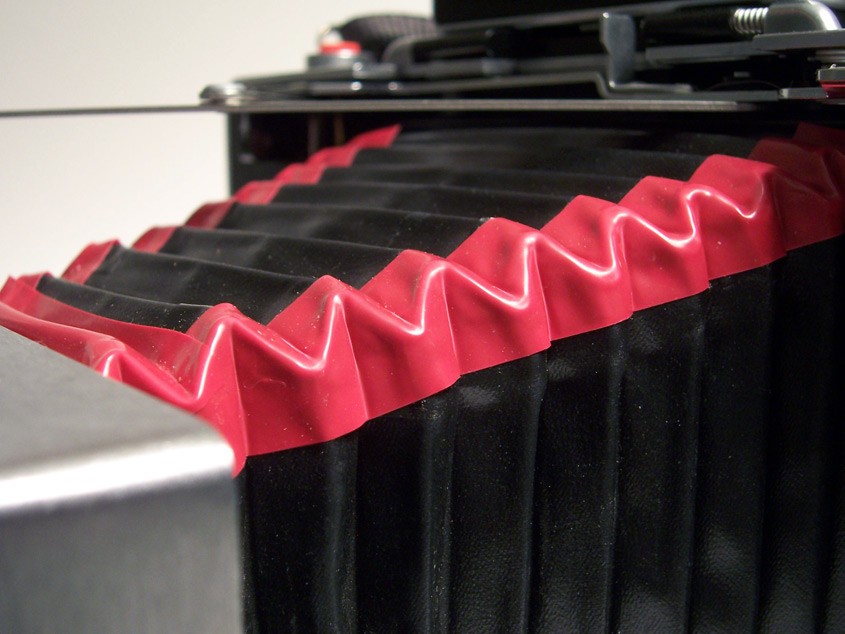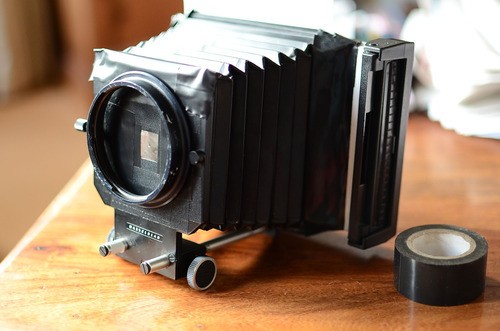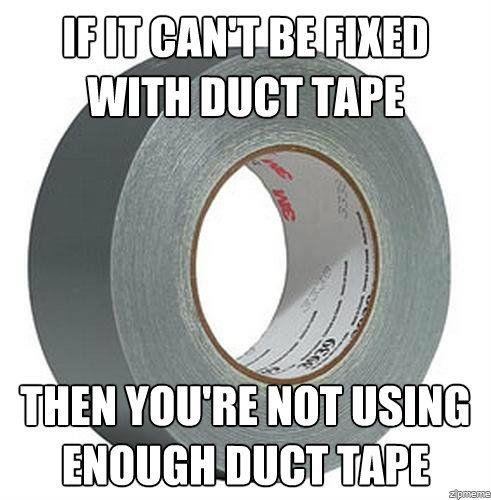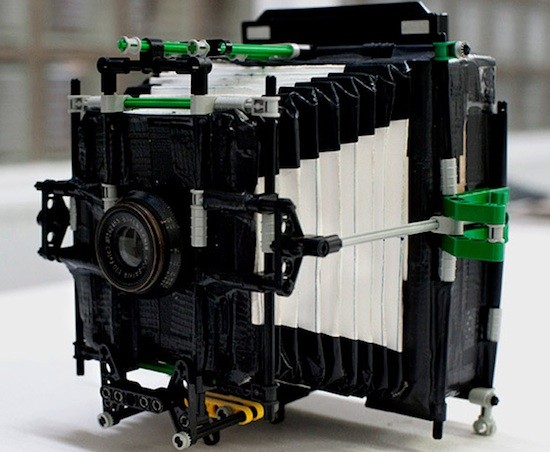- Joined
- Mar 8, 2011
- Messages
- 25,157
- Reaction score
- 9,010
- Location
- Iowa
- Website
- pixels.com
- Can others edit my Photos
- Photos NOT OK to edit
Follow along with the video below to see how to install our site as a web app on your home screen.

Note: This feature currently requires accessing the site using the built-in Safari browser.
Only if the tape is being worn by someone spectacular.
OK, I'll fess up. I poked a hole in the bellows (the side, not the edge) of my Franka Rolfix. I used a combination of liquid electrical tape and the real deal to seal up the hole. Works great and you can't tell it's there. Makes the camera functional (if the shutter blades weren't covered in oil....)
If it can't be fixed with duct tape, it isn't broken.Absolutely disgusting. I marvel at the ignorance of the vulgar folk who resort to such crude measures. The camera is ruined after the tape is applied, that much is obvious. The chemicals on the tape will transfer to the original material and permanently destroy it, as it cannot be removed without damage. Yet, I continue to read tutorials on the internet advocating for this very practice!
Look at this poor camera, ruined by an amateur who did not even attempt to match the color:
This is not conservation. It is destruction. These camera bellows were often made of leather, which means you should use leather to repair the light leaks!
The leather should be thinly pared and attached with a reversible adhesive such as methyl cellulose, rice starch paste, or wheat paste. Another technique would be to use Japanese kozo paper (known to the English as Mulberry paper), and attached with the methyl cellulose, rice starch or wheat paste and then painted black with professional conservation quality acrylic paint.
Here is another destroyed camera with electrical tape all over the front:
The amateur fiend even proudly photographs the electrical tape next to the camera. Electrical tape is for electricians, not photographers.
What do you think is going to happen when that tape is removed years later? My goodness, it is quite horrendous to imagine! The camera has lost all collectible value. After this abomination, the camera will have to be fully restored using new materials at a great cost.
The historical and cultural value of these cameras are being destroyed.
Stop this madness!
I must concur with our querulously verbose OP. Electrical Tape should definitely have not been used. The person should have used duct tape.

Personally I would suggest using camo duct tape so the repair couldn't bee seen.

I must progress now to my terrace as it is in need of truncation via the use of a mechanical cutter. I bid you all well until our next assemblage at this most revered symposium.
My feelings about the manner in which an antique is restored depends a lot on the antique in question. If someone glued sequins all over an old rusty Ford Pinto I would probably just laugh. But, if someone showed me a Rembrandt that had been “restored” with crayons and Sharpies it would probably ruin my day.
The same goes for antique cameras. My feelings about restoring an old cherry wood view camera wouldn't be the same as they would be for restoring an old Barbie Polaroid.
Some things are just more elegant than other things and it does pain me to see elegance ruined but I don't much care about ruining things that I perceive as cheesy to begin with.
But, not everyone puts the same values on things. I'm sure there are people who view Barbie Polaroids as the height of elegance and others who see cherry wood view cameras as worthless old junk.
Ah Contraire Pierre. One must understand the fundamentals of repair. Duct Tape is not always the answer.If it can't be fixed with duct tape, it isn't broken.Absolutely disgusting. I marvel at the ignorance of the vulgar folk who resort to such crude measures. The camera is ruined after the tape is applied, that much is obvious. The chemicals on the tape will transfer to the original material and permanently destroy it, as it cannot be removed without damage. Yet, I continue to read tutorials on the internet advocating for this very practice!
Look at this poor camera, ruined by an amateur who did not even attempt to match the color:
This is not conservation. It is destruction. These camera bellows were often made of leather, which means you should use leather to repair the light leaks!
The leather should be thinly pared and attached with a reversible adhesive such as methyl cellulose, rice starch paste, or wheat paste. Another technique would be to use Japanese kozo paper (known to the English as Mulberry paper), and attached with the methyl cellulose, rice starch or wheat paste and then painted black with professional conservation quality acrylic paint.
Here is another destroyed camera with electrical tape all over the front:
The amateur fiend even proudly photographs the electrical tape next to the camera. Electrical tape is for electricians, not photographers.
What do you think is going to happen when that tape is removed years later? My goodness, it is quite horrendous to imagine! The camera has lost all collectible value. After this abomination, the camera will have to be fully restored using new materials at a great cost.
The historical and cultural value of these cameras are being destroyed.
Stop this madness!
I must concur with our querulously verbose OP. Electrical Tape should definitely have not been used. The person should have used duct tape.

Personally I would suggest using camo duct tape so the repair couldn't bee seen.

I must progress now to my terrace as it is in need of truncation via the use of a mechanical cutter. I bid you all well until our next assemblage at this most revered symposium.
